Cubans see their urban agriculture movement as a possible solution as the world begins to grapple with increasing prices and demand for food and fuel. Many other countries have begun to use the Cuban experience as a model as locally grown, organic produce becomes more popular worldwide.
In 2007, Fidel Castro warned in the first published essay after his illness: "More than three billion people in the world are being condemned to a premature death from hunger and thirst" by diverting food crops to biofuels. In the past four years, food prices have indeed skyrocketed and a 2011 report by Oxfam identifies biofuel production as a principal cause of food insecurity.
Some Cubans see their urban agriculture movement as a possible solution as the world begins to grapple with increasing prices and demand for food and fuel: "There is an ecological trend, a green philosophy. This is an urgent call, an immediate future; the large urban centers, with the problems of oil production and the transport of goods, this could be a worldwide solution as it has been in Cuba. We have the advantage of having gone through what other countries may experience in 50 years,” says Miguel Salcines Lopez, President of Havana’s largest urban agriculture cooperative, Vivero Alamar.
Beginning with the collapse of the Soviet Union in 1989, Cuba entered a period of extreme shortages that came to be known as "The Special Period." With imports such as food, fuel, pesticides, and fertilizers disappearing almost overnight, Cubans began to grow their own produce wherever they could—balconies, empty lots, and roof-tops. Initially these were grassroots initiatives born of necessity, but over the next decade they would become a central tenet of state planning and a pillar for the island's economy.
A homage to the history of Cuban urban agriculture in the home of Oscar Aleman Perez in Havana. In the 1970s and '80s, Raul Castro, as Defense Minister, encouraged the development of urban agriculture and oversaw experimental organic farming in military facilities. In those days, the organoponicos, as they came to be known, were introduced in preparation for a possible worldwide embargo of Cuba; today they are a training ground and growth area for Raul Castro's economic reforms that allow for more small business.
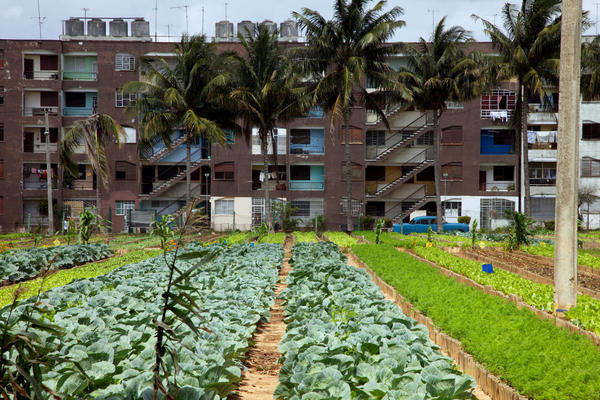
In 1994, the Ministry of Agriculture institutionalized urban agriculture initiatives under one umbrella. Projects from informal family gardens (huertos), to large cooperatives (organoponicos), to state-owned gardens would all receive assistance from the ministry, which sought to provide free land to residents for gardens, through support in the start-up phase, providing seed banks, and overseeing hundreds of horticultural clubs for information exchange.
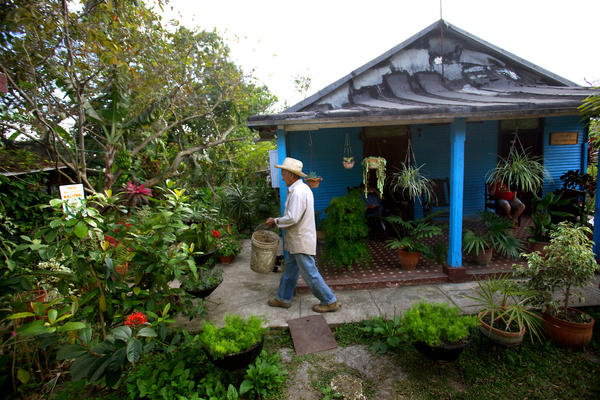
Many Cubans assumed that as the shortages of the 1990s faded, so too would urban agriculture, but instead it has expanded in the last decade. Indeed, many other countries have begun to use the Cuban experience as a model as locally grown, organic produce becomes more popular worldwide. Of the recently released linamientos, or guidelines, for economic and social reforms in Cuba, 12 refer to urban agriculture. Number 174 states the necessity of increasing agricultural initiatives that can substitute for food imports, “with emphasis in the execution of the urban agriculture program, which should be extended to the entire country.”
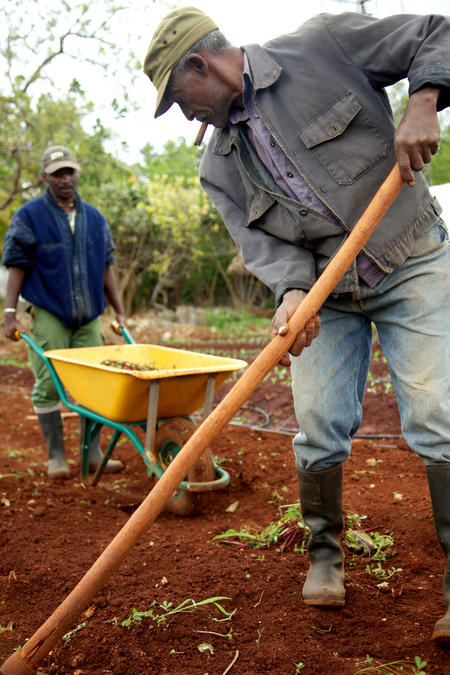
The Vivero Alamar organoponico provides jobs for 163 people, many of them elderly. They are all stake-holding members of the cooperative. Across Cuba, 400,000 people are employed in urban agriculture and generally earn more than government employees because they receive a percentage of sales. Salcines Lopez explains, "This had a great social impact; it alleviated the high level of unemployment during the special period, and its wider impact was in providing healthy food at a more affordable price.”
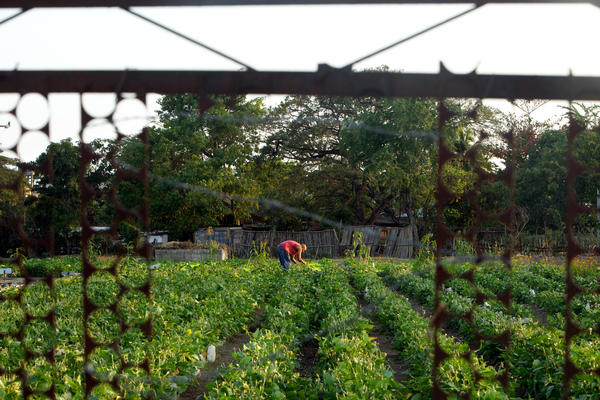
Challenges remain for urban agriculture in Havana (a lack of quality soil, water shortages, pest problems), but the wide-ranging achievements are clear. Although organoponicos were developed out of an immediate need for food, they have contributed to the greening of a city whose face has been decaying during the same period. They have reduced carbon emissions drastically and helped convert Cuba from practicing monocropping to a model for diversified organic farming. Yet, for all the successes of organoponicos, Cuba remains highly dependent on food imports.
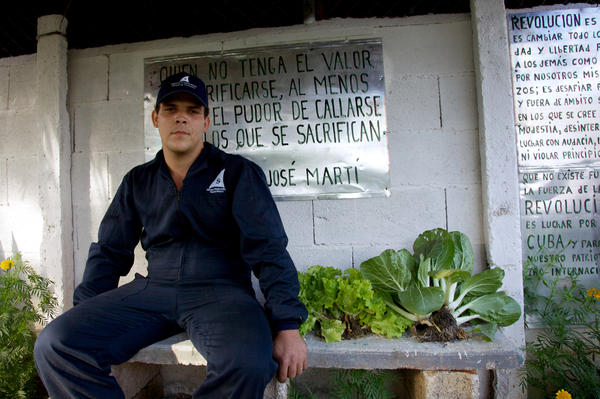
Daniel Canilo Miraes's family says that his obsessive compulsive disorder made it impossible for him to hold a job, but he has turned his drive into his home garden—selling lettuce to the neighborhood under revolutionary quotes by Jose Martí. The quote reads, “He who lacks the valor to sacrifice should at least have the humility to remain silent in front of those who sacrifice.” Number 177 of the linamientos reads, “...[In the] sectors of farming and cooperatives, the producer will not receive a state salary, he will depend on his revenue. The price of the majority of the products will respond to supply and demand, and in general there will be no subsidies.”
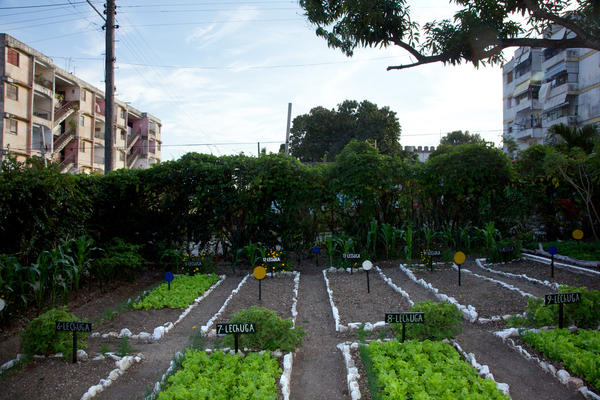
Miraes's impeccable yard shows the sophistication of even the most informal organoponicos and huertas. There are no chemical pesticides or fertilizers allowed in organoponicos. Many make their own compost and have developed natural pesticides, but there are over 7000 production centers in Cuba that distribute organic fertilizers. Urban farmers rely exclusively on animal and human labor rather than machinery.
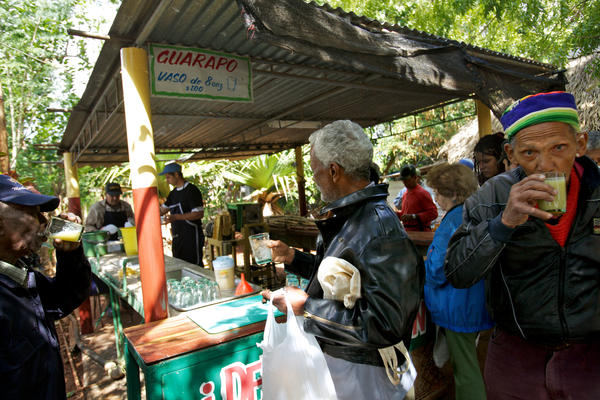
The benefits of urban agriculture in Cuba are many, but one of the most notable is the improvement in the diet of Cubans. Salcines Lopez explains, "The urban agriculture initiative is a project that provides fresh vegetables daily and that has caused people to introduce those products into their diet—people now consume many more vegetables than they did before the Special Period."
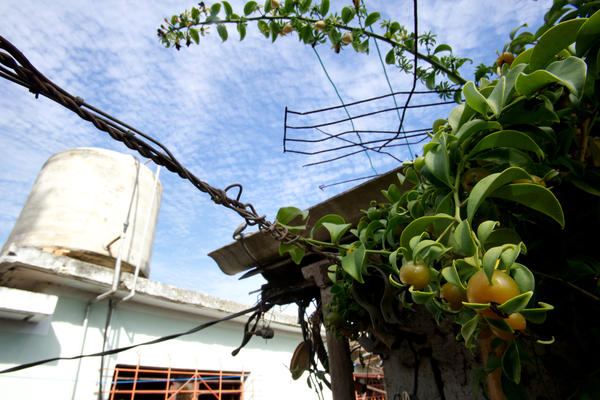
The International Food Policy Research Institute found that “Urban agriculture provides an estimated 15% of all food consumed in urban areas worldwide and is likely to double that share in the next couple of decades.” In contrast, Havana seems saturated with production. Indeed, 90% of Havana's produce comes from local growing.
Noah Friedman-Rudovsky is a freelance photojournalist and videographer. He received a Fulbright fellowship for photography of Bolivia’s social movements in 2004. He later spent two years as official photographer of President Evo Morales. Noah is a contributor to The New York Times, and his coverage of Latin America has also appeared in The New Yorker, Der Spiegel, Paris Match, Time Magazine, The New York Times Magazine, among others. He works frequently for NGOs such as Oxfam, UNICEF, Planned Parenthood, and The Carter Center in the region.

